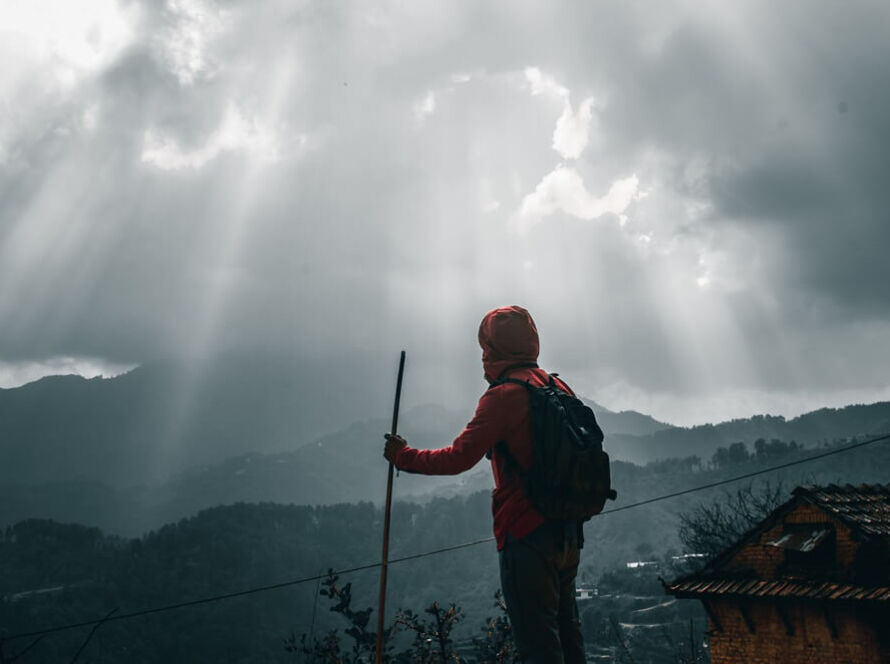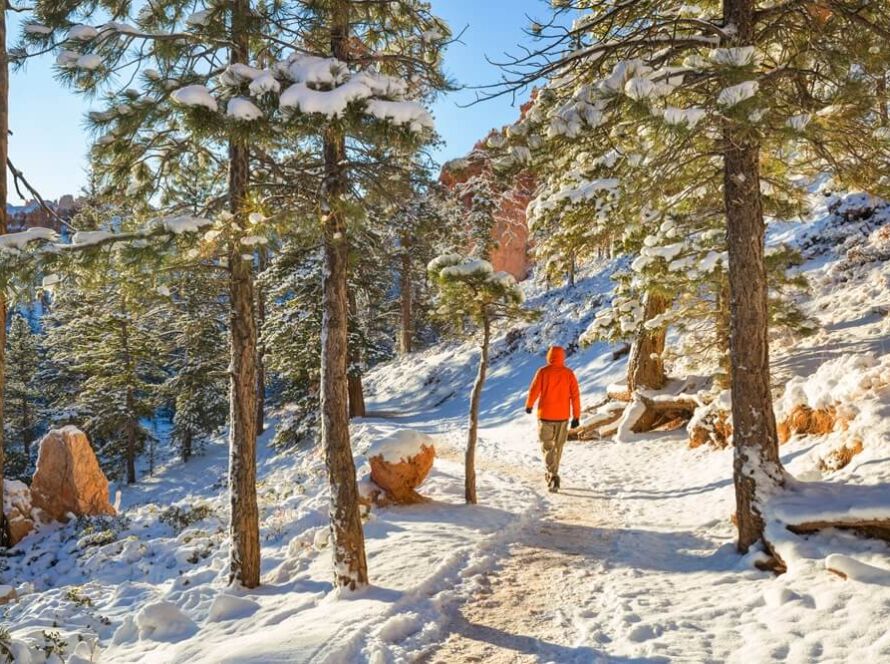Trekking is no longer just for seasoned mountaineers. In 2025, more beginners than ever are exploring nature’s trails, and for good reason. Trekking improves your fitness, clears the mind, and let’s you reconnect with nature at your own pace. But if you’re new to hiking, getting started can feel overwhelming. That’s where this guide comes in.
We’re sharing practical trekking advice for beginners—from gear and trail suggestions to easy hiking tips for beginners and safety essentials—to help you enjoy your first hike with confidence. Whether you’re planning an escape from city life or looking to try something adventurous over a weekend, these insights will prepare you for a safe and rewarding experience. Let’s get started!
Why Trekking Is Perfect for Beginners
Trekking is one of the easiest ways to begin your outdoor adventure journey. It’s low-cost, accessible, and offers immense benefits:
- Improved physical health: Walking on trails strengthens your muscles and improves cardiovascular fitness.
- Mental clarity: Nature helps reduce stress and anxiety, especially in peaceful environments.
- Accessibility: Many beginner-friendly trails are short (2–5 km) and have minimal elevation gain, making them suitable for most fitness levels.
For first-timers planning their hike in June, the timing couldn’t be better. Pre-monsoon weather offers lush scenery without the challenges of slippery terrain. Trails are shaded, temperatures are moderate, and views are breathtaking—ideal conditions for easy hikes for beginners in India.
Essential Gear for Beginner Trekkers
1. Footwear
The most important gear for any hike is your footwear. Invest in a sturdy pair of hiking shoes with good grip and ankle support. Avoid new shoes on your first hike—break them in beforehand to prevent blisters.
2. Clothing
Dress in layers. A moisture-wicking base layer, breathable mid-layer, and a light waterproof jacket work best. This ensures you’re ready for changing weather, especially in June when sudden rain showers can occur. Don’t forget a cap for sun protection.
3. Backpack and Essentials
Use a lightweight backpack (15–20L) to carry:
- 2L of water (hydration is critical!)
- Dry snacks (nuts, energy bars)
- Compact first-aid kit
- Flashlight and power bank
- Trail map or download an offline GPS app
4. Navigation and Safety Tools
Download a GPS app like Gaia or AllTrails and share your trail plan with a friend or family member. Keep your phone fully charged and carry emergency numbers.
Read More: 15 Essential Things to carry while Trekking
5 Easy Hiking Trails for Beginners in India
Uttarakhand, with its welcoming terrain and spiritual charm, offers some of the best beginner-friendly treks in India. These trails are perfect for first-timers looking to explore the Himalayas without needing advanced trekking skills.
🥾 1. Deoriatal Chandrashila Trek
- Duration: 3–4 days
- Max Altitude: 12,100 ft
- Highlights: A short but diverse trek that starts from Sari village and takes you through rhododendron forests to the beautiful Deoriatal Lake. The final climb to Chandrashila summit offers 360-degree views of peaks like Nanda Devi, Chaukhamba, and Trishul.
- Ideal For: Beginners wanting a mix of forest, summit, and cultural experience
How to Reach:
- Nearest Railway Station: Haridwar (215 km from Sari)
- Nearest Airport: Jolly Grant Airport, Dehradun (220 km)
- From Rishikesh/Haridwar, take a cab or shared jeep to Ukhimath, then further to Sari village (starting point)
🌄 2. Nag Tibba Trek
- Duration: 2 days
- Max Altitude: 9,910 ft
- Highlights: One of the most accessible treks near Mussoorie, Nag Tibba is ideal for weekend getaways. The trail takes you through dense forests and opens up to stunning Himalayan vistas from the summit, making it a great introduction to trekking.
- Ideal For: Weekend hikers and families
How to Reach:
- Nearest Railway Station: Dehradun (100 km from Pantwari village)
- Nearest Airport: Jolly Grant Airport, Dehradun
- Drive or take a shared taxi from Dehradun to Pantwari (base village)
🏞️ 3. Valley of Flowers Trek
- Duration: 5–6 days
- Max Altitude: 14,100 ft
- Highlights: This monsoon-season trek is famed for its vibrant alpine flowers and lush valley landscapes. Located in the UNESCO-protected Nanda Devi Biosphere, it’s an easy-to-moderate trail leading to one of the most photogenic regions in Uttarakhand.
- Ideal For: Nature lovers and beginners with moderate fitness
How to Reach:
- Nearest Railway Station: Rishikesh (275 km from Govindghat)
- Nearest Airport: Jolly Grant Airport, Dehradun
- From Rishikesh/Dehradun, drive or take a cab to Govindghat → trek to Ghangaria → Valley of Flowers
🌲 4. Kedarkantha Trek
- Duration: 4–6 days
- Max Altitude: 12,500 ft
- Highlights: A popular winter trek starting from Sankri, Kedarkantha offers snow-laden trails, charming villages, and open campsites with starry skies. It’s an ideal choice for first-timers looking to trek in snow without extreme altitude gain.
- Ideal For: Beginners looking for a snowy adventure
How to Reach:
- Nearest Railway Station: Dehradun (200 km from Sankri)
- Nearest Airport: Jolly Grant Airport, Dehradun
- From Dehradun, drive or take a shared cab to Sankri village (base camp)
🌿 5. Dayara Bugyal Trek
- Duration: 4–5 days
- Max Altitude: 12,000 ft
- Highlights: This trek leads you to one of India’s most beautiful high-altitude meadows. With gradual ascents and breathtaking views of Bandarpunch and other Himalayan peaks, it’s a great fit for beginners and photographers alike.
- Ideal For: Photography lovers and first-timers
How to Reach:
- Nearest Railway Station: Dehradun (190 km from Raithal)
- Nearest Airport: Jolly Grant Airport, Dehradun
- Drive or take a cab to Raithal or Barsu (starting villages for Dayara Bugyal trek)
Safety and Preparation Tips for Beginner Treks
- Start small: Choose a short trail (2–3 hours) for your first trek to test your stamina and pace.
- Check the weather: June is usually favorable, but sudden rains can make trails slippery.
- Hike in groups: Always go with a buddy or in a group. It’s safer and more fun.
- Carry basic safety gear: Include a whistle, flashlight, small knife, and first-aid kit.
- Stay hydrated and eat well: Don’t underestimate the energy needed for even easy hikes.
Frequently Asked Questions (FAQs)
1. What is the best time of year to start trekking in India?
For most Himalayan treks, the best seasons are March–June (spring/summer) and September–November (post-monsoon/autumn). Avoid monsoon season (July–August) due to slippery trails and landslides.
2. What should I pack for my first trek?
Pack light but essential gear:
- Sturdy trekking shoes
- Layered clothing
- Water bottles or hydration packs
- Raincoat/windcheater
- Trekking pole
- Personal medication and first-aid kit
3. Are guided treks necessary for beginners?
Yes, it’s advisable. Guided treks provide route safety, food, local expertise, and emergency assistance—especially important for those unfamiliar with mountain terrain or altitude sickness.
4. How can I prepare physically for a beginner trek?
Start 4–6 weeks before your trek:
- Daily walks or jogs (4–5 km)
- Stair climbing
- Light strength training
- Cardio exercises like cycling or swimming
5. What are the most beginner-friendly treks in Uttarakhand?
Some great options include:
- Deoriatal–Chandrashila
- Nag Tibba
- Dayara Bugyal
- Kedarkantha
- Valley of Flowers
6. Do I need any permits for beginner treks in Uttarakhand?
Yes, many treks (especially inside protected forest areas or national parks) require permits. These are usually arranged by your trek operator or can be obtained from the forest office near the starting point.
7. What is AMS and should beginners worry about it?
Acute Mountain Sickness (AMS) occurs at high altitudes due to lower oxygen. For beginner treks below 12,000 ft, AMS risk is low, but hydration and gradual ascent are crucial.
8. Can I do a solo trek as a beginner?
It’s not recommended. Beginners should always trek with a group or a certified guide for safety, navigation, and support.
9. How much does a beginner trek in India cost?
Costs vary by trek, operator, and duration. Typically, it ranges from ₹3,000 to ₹12,000 for 2–6 day beginner treks, including guide, food, stay, and transport from base village.
10. Are children allowed on beginner treks?
Yes, children above 8 years with basic fitness can join short beginner treks like Nag Tibba or Deoriatal–Chandrashila, under adult supervision.
Conclusion
If you’re seeking an escape into nature, there’s no better time than now to start trekking. With the right trekking advice for beginners, essential gear, and trail guidance, your first hike can be a truly memorable one.
Summer 2025 offers the perfect setting to begin this journey. Trails across India are lush and alive before the monsoon intensifies, making it a great time to test your trekking skills on easy trails.
Beginner trekking essentials are simple but crucial—good shoes, layered clothing, hydration, and safety awareness. Follow our easy hiking tips for beginners, stay prepared, and explore the wild with confidence.
Ready for your first trek? Bookmark our beginner trekking gear checklist and plan your adventure today!


